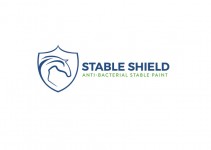Posted: 10th November 2017 | Back to news feed

Bringing home a new horse or pony to the yard can be a stressful event. While you may be feeling a certain amount of excitement and anxiousness, remember so will your horse. After all, your new equine partner is the one that has been uprooted from his familiar surroundings and companions. Here the team at Stable Shield provide advice to make sure you are prepared and ready for the occasion.
- Be sure that all horses currently on the yard are up to date with vaccinations and wormers.
- Ensure that the new horse has undergone tests for any infections to avoid any unwanted illnesses spreading to your current horses.
- Before you bring your new horse home, you will need to figure out where to stable him, consider his bedding and any equipment required such as needing new feed and water buckets.
- If you have an automatic watering system find out if your new horse is accustomed to this process. If he isn’t you should put out a water bucket until he is used to the water system.
- You will need to prepare your new horse’s stable, making sure to thoroughly clean and disinfect the area before painting it. We suggest you use Stable Shield Antibacterial Paint, to help protect against bacteria, infections and diseases. If you are housing your new horse or pony in an isolation stable first, this will also need to undergo the same process; clean, disinfect and paint with Stable Shield Antibacterial paint.

- Consider what you are going to feed your new horse, speak to the previous owners about what he has been eating and how much. Find out how much of either feed, hay, and or field turnout the horse has been getting on a daily basis. It is a good idea to get stocked up with the feed brand he is used to so that he settles into his new home easier. You may want to eventually change your new horse over to different feed but this must be done gradually.
- Check that your fencing is secure in your paddock to ensure your horse is safe and cannot escape or hurt himself. You may also want to consider making your paddock smaller when he first arrives.
- Inspect all fences, stall walls, gates, doors and the ground for any hazards your new horse may hurt himself on. Taking extra care to avoid any accidents will allow your horse to settle in easier and faster by preventing any stressful experiences.
- Be organised and have your new horse’s own grooming equipment, rugs and saddlery as prepared as you can bearing in mind if you are getting a new saddle it will want fitting by a Qualified Saddle Fitter.
- Research which equine dentist, vet and farrier you will use for your new horse so that you are ready if you need to call someone out unexpectedly. If you do not already know any contacts, try talking to friends to see who they use. Having these contacts at hand will put you at ease and make you feel in control.
Prepare yourself and your surroundings before your new horse arrives so that you can put your nerves and feelings of stress at ease, you will be able to spend more time bonding with your new equine friend instead of running around trying to do things that could have been done before your arrival.
For more information on Stable Shield visit www.stableshield.co.uk
The Equestrian Index newsfeed is compiled from articles submitted by advertising members and expresses the opinions of those members. Watsons Directories Ltd shall not be held liable for any inaccuracies or mis-statements therein.
